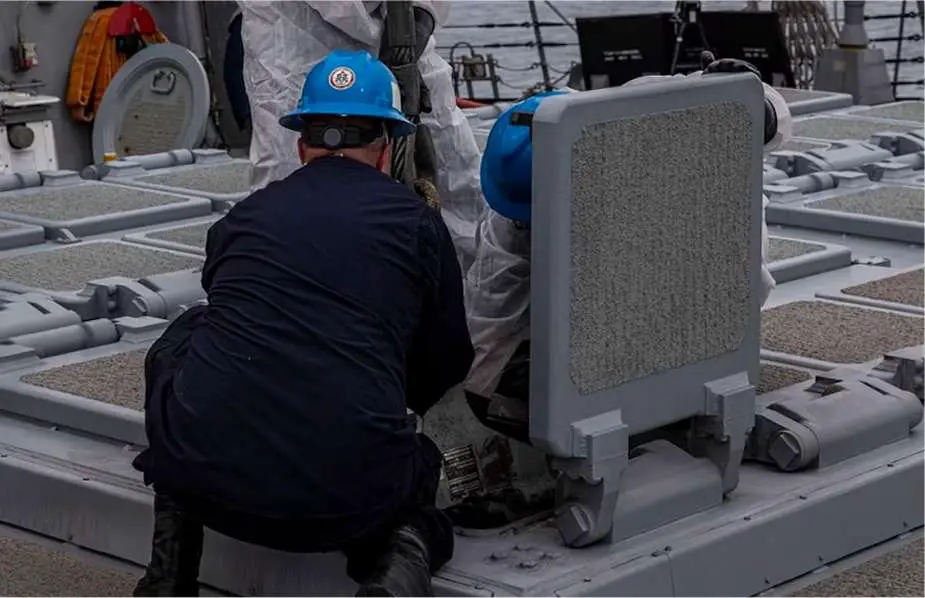Breaking news
US Navy's destroyer USS Rafael Peralta completes missile reload in Australia.
According to information published by the US DoD on September 7, 2023, the USS Rafael Peralta, an Arleigh Burke-class destroyer, conducted a live ordnance reload for a U.S. naval ship in Eden, Australia.
Follow Navy Recognition on Google News at this link
 Sailors on the USS Rafael Peralta (DDG 115) get ready to extract a spent SM-2 missile cartridge from a VLS tube amidst an SM-2 missile resupply. (Picture source: Dvids)
Sailors on the USS Rafael Peralta (DDG 115) get ready to extract a spent SM-2 missile cartridge from a VLS tube amidst an SM-2 missile resupply. (Picture source: Dvids)
This momentous reload of its Vertical Launch System (VLS) was carried out subsequent to the destroyer's participation in the Talisman Sabre 23 exercise, during which it executed a live-fire drill utilizing the Standard Missile (SM) 2.
Cmdr. Charles Cooper, the commanding officer of USS Rafael Peralta, underscored the importance of broadening the range of strategic sites across the Indo-Pacific, enabling U.S. naval ships to replenish missile stockpiles during their deployment.
The destroyer's recent activities have kept it close to Australian shores. Starting its journey with the Talisman Sabre 23 in late July, the USS Rafael Peralta then graced Sydney with a scheduled stopover and subsequently backed the Malabar 2023 exercise, which culminated on August 21.
About the Standard Missile or SM-2
Designed primarily as a surface-to-air defense mechanism, it plays a vital role in safeguarding fleet areas and individual ships. While its primary mission is clear, it is also equipped to serve as an anti-surface ship missile.
This missile has shown its efficacy against a diverse range of targets, from surface vessels to helicopters and even manned aircraft. One of its notable features is its ability to counter threats at varying altitudes and speeds, making it effective against stationary to supersonic targets.
Whether under clear skies or challenging weather conditions, the SM-2 operates seamlessly, even in electronic countermeasures settings. Its propulsion is driven by tail controls and a solid-fuel rocket motor, with the extended range versions having an added booster for thrust vector controls.
This missile can be integrated into the DDGs 48-Cell MK41 Vertical Launch System, expanding its usability beyond just the FFGs. Manufactured by Raytheon, this missile is powered by a dual thrust, solid fuel rocket, weighing in at 708 kilograms.
It's designed with a diameter of 34.3 centimetres, a wingspan of just over a meter, and a length of 4.72 meters. In terms of performance, it can cover a range of over 166 kilometers at speeds exceeding Mach 3.




























